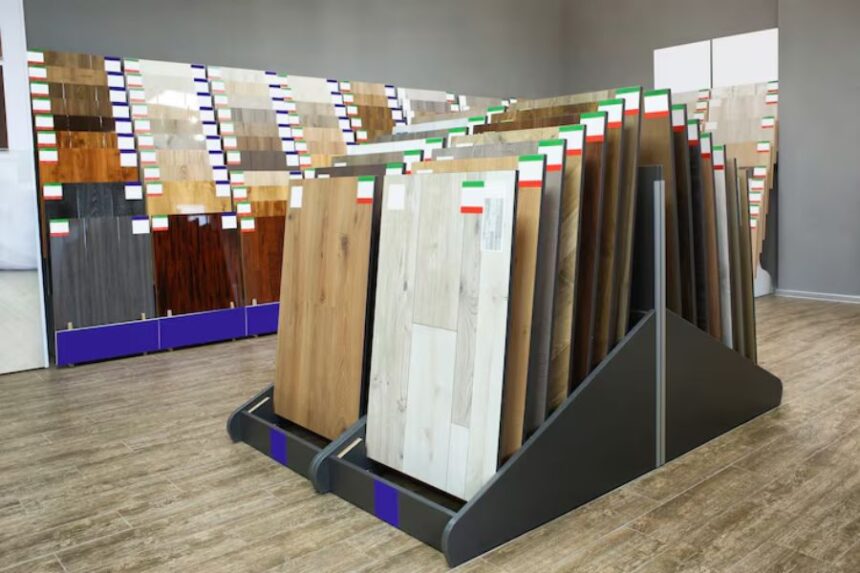Laminates have become an essential part of modern design, offering a unique blend of style, durability, and affordability. From kitchens and bathrooms to commercial offices and retail spaces, laminates provide a versatile solution for surfacing needs.
- What Are Laminates?
- Types of Laminates
- Benefits of Using Laminates
- 1. Versatile Design Options
- 2. Cost-Effective
- 3. Durable and Long-Lasting
- 4. Easy Maintenance
- 5. Hygienic and Safe
- Common Applications of Laminates
- Kitchen Surfaces
- Bathroom Interiors
- Office Furniture
- Retail and Hospitality Spaces
- Feature Walls and Panels
- Choosing the Right Laminate
- Sustainability Considerations
- Conclusion
Whether you’re renovating your home or designing a new workspace, understanding laminates can help you make informed decisions that balance aesthetics with performance.
What Are Laminates?
Laminates are synthetic materials made by bonding multiple layers of paper or fabric together with resins under heat and pressure. The top layer is typically a decorative sheet that mimics the appearance of natural materials such as wood, stone, or metal, while the core layers provide structure and durability.
These materials are widely used for surfacing furniture, cabinetry, countertops, and wall panels due to their wide range of designs, textures, and finishes.
Types of Laminates
Laminates come in several types, each designed to serve different functional and aesthetic purposes.
High-Pressure Laminates (HPL)
These are manufactured using high heat and pressure, making them strong, impact-resistant, and ideal for heavy-use areas like kitchens and office furniture.
Low-Pressure Laminates (LPL)
Made with less intense manufacturing processes, LPLs are typically used for vertical surfaces such as cupboard doors and decorative panels.
Compact Laminates
These are thicker and self-supporting, commonly used in areas that require extra durability like lab benches, restroom partitions, and lockers.
Decorative Laminates
Designed primarily for aesthetic appeal, decorative laminates come in a wide array of colours, patterns, and textures to suit various interior styles.
Benefits of Using Laminates
Laminates offer a range of advantages that make them a preferred choice for both residential and commercial applications.
1. Versatile Design Options
From woodgrain finishes to abstract patterns and solid colours, laminates allow for endless creativity. They help achieve high-end looks at a fraction of the cost of natural materials.
2. Cost-Effective
Laminates provide a budget-friendly alternative to materials like hardwood or stone, making them accessible without compromising on style.
3. Durable and Long-Lasting
Quality laminates are resistant to scratches, stains, moisture, and heat, which makes them suitable for high-traffic areas and daily wear and tear.
4. Easy Maintenance
Unlike natural wood or stone, laminates do not require sealing or special treatments. Regular cleaning with a damp cloth is usually sufficient to keep surfaces looking new.
5. Hygienic and Safe
Laminates with antibacterial properties are ideal for environments like hospitals, schools, and kitchens where hygiene is a top priority.
Common Applications of Laminates
Thanks to their versatility, laminates can be used in a wide variety of interior applications.
Kitchen Surfaces
Laminates are often used for kitchen countertops, cabinet facades, and splashbacks due to their resistance to heat and moisture.
Bathroom Interiors
Water-resistant laminates work well in vanities and bathroom wall panels, offering both practicality and visual appeal.
Office Furniture
Desks, conference tables, and storage units often feature laminates for their professional look and ability to withstand everyday use.
Retail and Hospitality Spaces
Laminates are a popular choice in commercial settings for their aesthetic flexibility and ease of cleaning, contributing to a polished and welcoming environment.
Feature Walls and Panels
Textured and high-gloss laminates can create eye-catching feature walls, adding depth and sophistication to any space.
Choosing the Right Laminate
When selecting laminates, consider the following factors:
- Application Area: High-use or moisture-prone areas require more durable, resistant laminates.
- Design Theme: Match laminate colours and patterns with your overall interior design.
- Finish Type: Choose between matte, gloss, textured, or embossed finishes depending on your visual and tactile preferences.
- Thickness: For countertops or high-impact surfaces, opt for thicker, high-pressure laminates.
Sustainability Considerations
Many manufacturers now offer eco-friendly laminates made using recycled materials and low-emission resins. Choosing sustainable laminates contributes to healthier indoor environments and aligns with green building practices.
Conclusion
Laminates have evolved far beyond their original utilitarian purpose to become a cornerstone of modern design. With their vast range of designs, finishes, and applications, they offer an ideal solution for enhancing interiors while maintaining functionality and durability. Whether you’re updating a kitchen, furnishing an office, or styling a retail space, laminates provide a practical yet stylish path to achieve your design goals.




